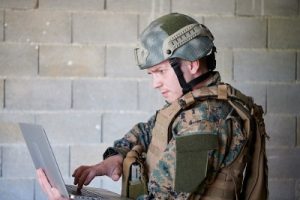 The National Defense Strategy (NDS) sets the strategic direction for our military to meet the security threats of tomorrow. Overall, the Defense Strategy focuses on China and Russia as the primary adversaries, but it also emphasizes the importance of global cooperation among allies as well as adversaries to meet threats that are bigger than any one country including climate change, food insecurity, and pandemics. The defense strategy lays out three primary tactics for advancing U.S. and global security.
The National Defense Strategy (NDS) sets the strategic direction for our military to meet the security threats of tomorrow. Overall, the Defense Strategy focuses on China and Russia as the primary adversaries, but it also emphasizes the importance of global cooperation among allies as well as adversaries to meet threats that are bigger than any one country including climate change, food insecurity, and pandemics. The defense strategy lays out three primary tactics for advancing U.S. and global security.
Integrated Deterrence
The practice of integrated deterrence involves working closely across all branches of the military, warfighting domains, and even across other federal entities to ensure national security. It expands responsibility for deterring adversaries beyond the Department of Defense (DoD), involving the intelligence community, health agencies, environmental agencies, and more. Continue reading


 Remote work, necessitated by the pandemic, accelerated many agencies' move to cloud computing. With remote and dispersed teams here to stay, cloud is a critical, if not primary, infrastructure for a number of organizations. With this wide reliance on cloud, the Cybersecurity and Infrastructure Security Agency (CISA) has been releasing
Remote work, necessitated by the pandemic, accelerated many agencies' move to cloud computing. With remote and dispersed teams here to stay, cloud is a critical, if not primary, infrastructure for a number of organizations. With this wide reliance on cloud, the Cybersecurity and Infrastructure Security Agency (CISA) has been releasing 
